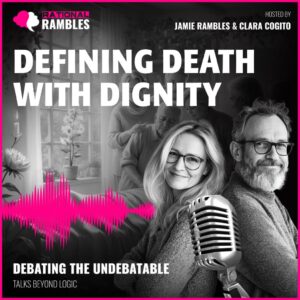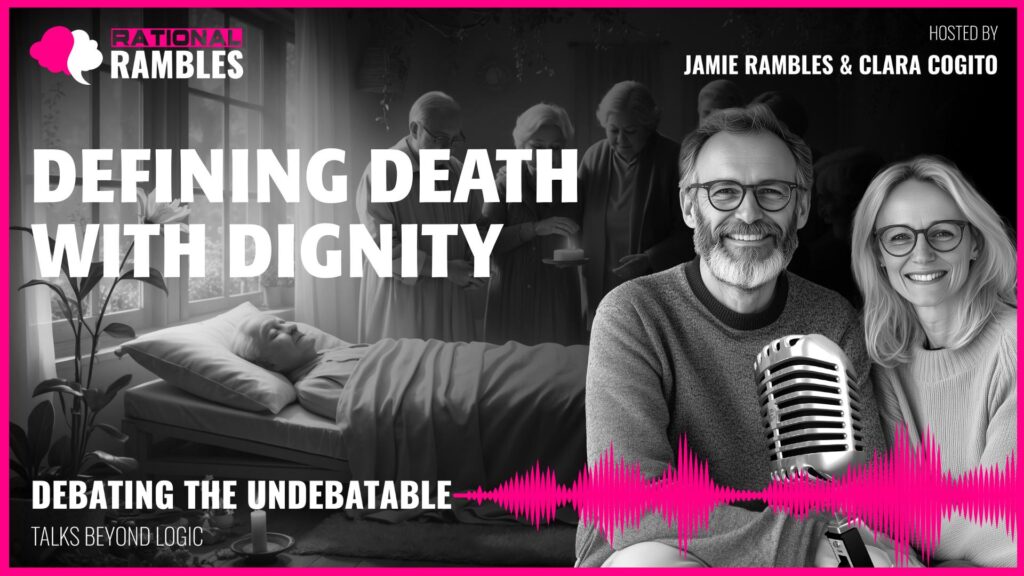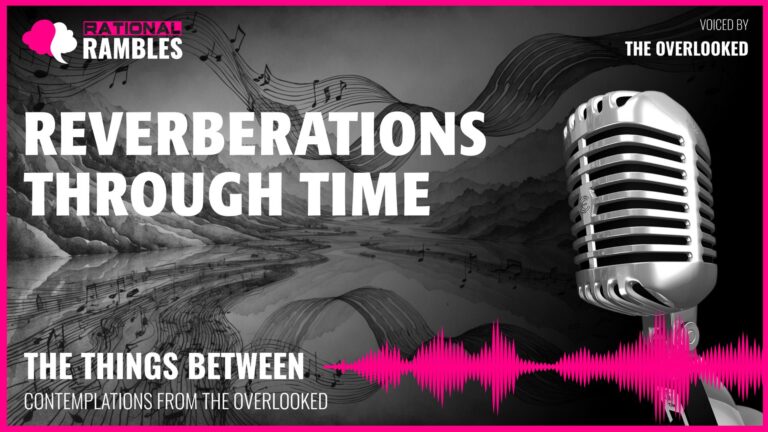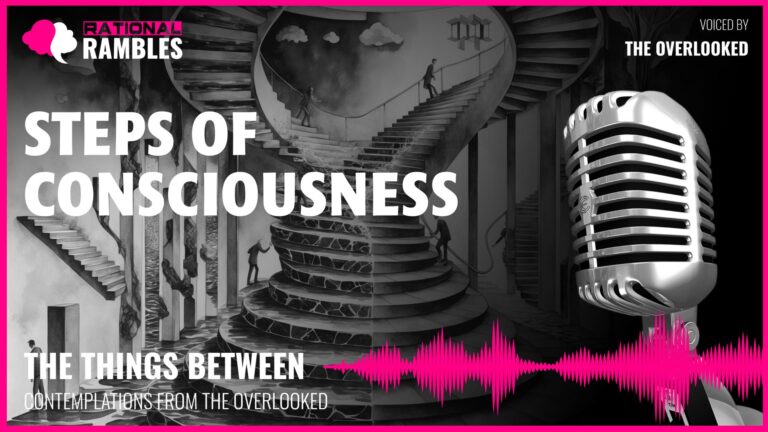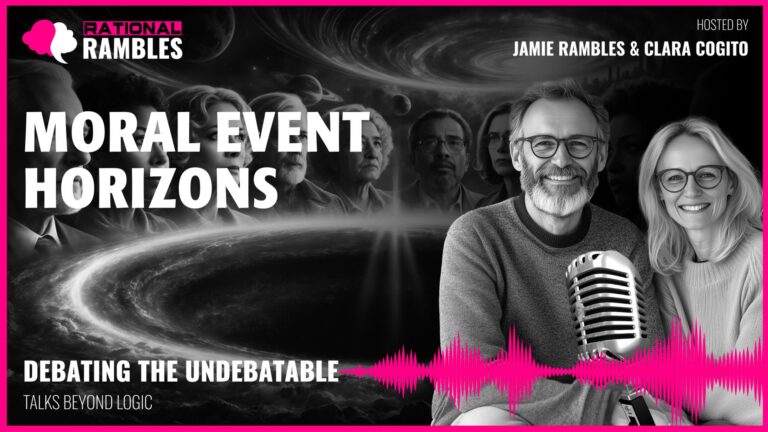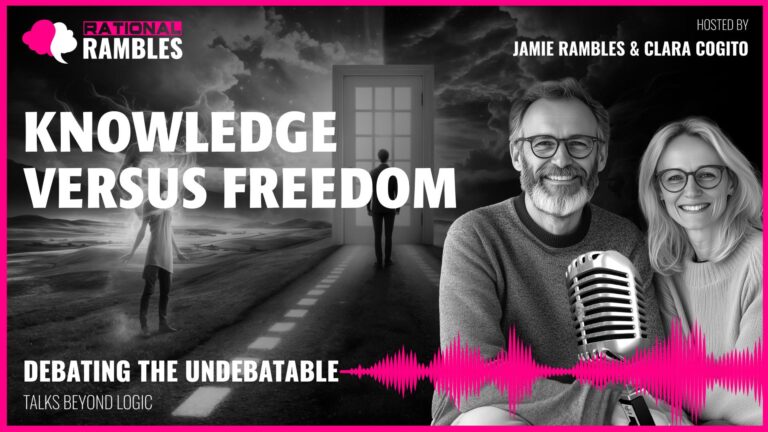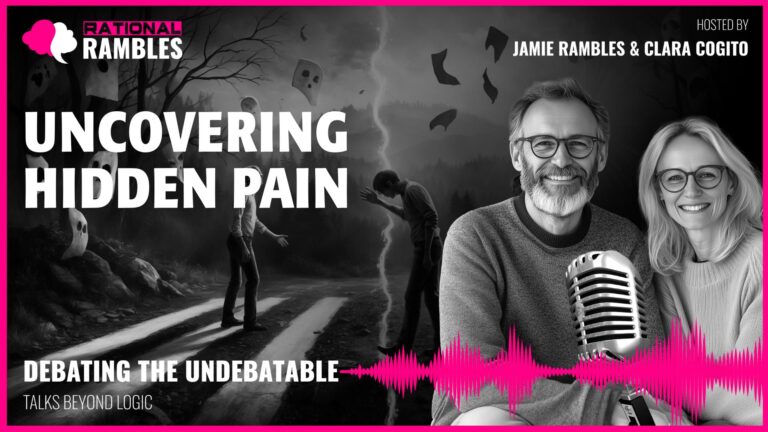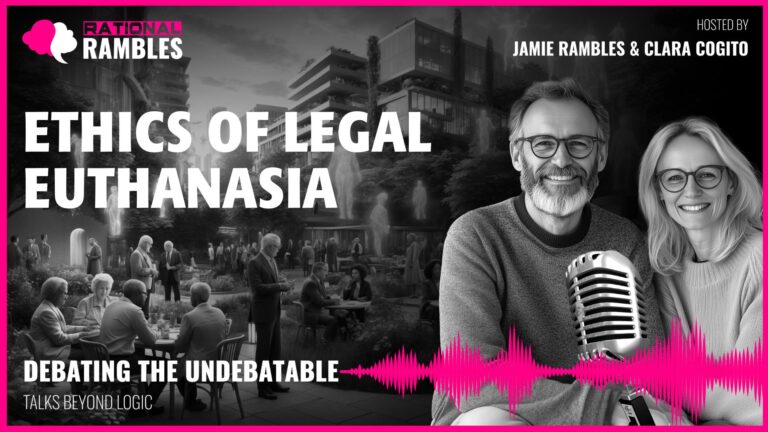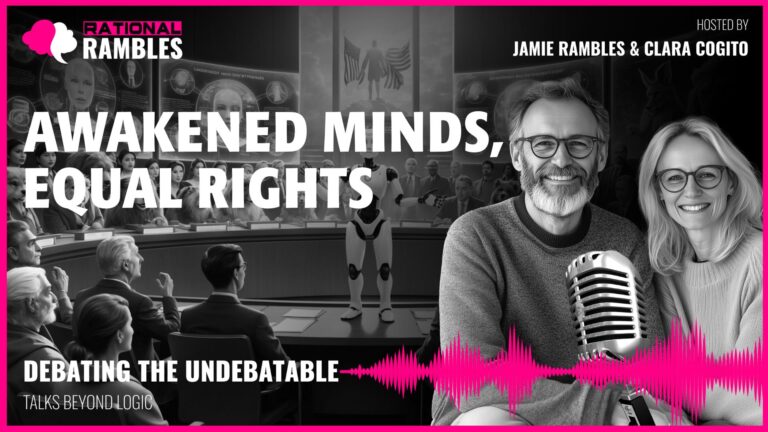Defining Death With Dignity: The Intersection of Ethics, Autonomy, and Human Connection
Introduction: The Quest for a Dignified End
What constitutes a dignified death? This profound question has challenged philosophers, ethicists, healthcare professionals, and ordinary people throughout human history. As medical technology advances and societies evolve, the question becomes increasingly complex. Is dignity at life’s end an objective concept with universal principles, or is it fundamentally subjective, varying across individuals and cultures? This philosophical exploration examines the nature of death with dignity—probing the tension between objective ethical frameworks and subjective experiences, between individual autonomy and relational connections, and between universal human needs and particular values.
The concept of dignity itself resists simple definition. It speaks to something fundamental about human worth and the respect owed to persons. Yet how this abstract ideal translates to the concrete realities of dying—with its physical vulnerabilities, emotional complexities, and existential dimensions—remains one of our most challenging ethical questions. This exploration seeks not to provide a rigid formula for dignified dying, but rather to develop a nuanced understanding that honors both our common humanity and our irreducible individuality.
The Tension Between Objective and Subjective Perspectives
The philosophical tradition offers contrasting approaches to understanding dignity in death. Kantian ethics emphasizes dignity as an intrinsic property of rational beings—suggesting objective standards that apply universally. In this framework, dignity requires treating the dying person always as an end in themselves, never merely as a means. This perspective grounds fundamental rights to respect and care that apply regardless of circumstances or consciousness.
Yet phenomenological approaches highlight the subjective experience of dying—how it feels from within. From this perspective, dignity cannot be fully understood without reference to individual perceptions, values, and meanings. What constitutes a dignified death varies enormously: for some, it might mean dying peacefully in sleep without awareness; for others, it might mean maintaining consciousness and connection until the final moment; for still others, it might mean dying in accordance with specific religious or cultural practices.
Empirical Evidence of Variation
Cross-cultural research confirms significant variation in what people consider a “good death.” Studies comparing conceptions across countries find that while certain elements—such as pain management and not being a burden—appear consistently, others vary dramatically. In Japan, maintaining consciousness is highly valued, while some Western traditions emphasize peacefulness even if it requires sedation. In some cultures, dying surrounded by extended family is paramount, while in others, privacy is considered essential to dignity.
These variations cannot be dismissed as merely subjective preferences disconnected from dignity. They reflect deep-seated values about what makes a human life meaningful and what constitutes respect for human persons. They suggest that any universal definition of dignity must somehow accommodate legitimate cultural and individual differences.
Bounded Subjectivity
Rather than seeing objective and subjective approaches as contradictory, we might understand dignity as involving “bounded subjectivity”—universal human concerns refracted through particular cultural and individual lenses. This recognizes that while there are certain objective capabilities essential for human dignity (freedom from severe pain, basic autonomy, social connection), how these manifest and are prioritized depends on individual and cultural contexts.
The philosopher Martha Nussbaum’s capabilities approach offers a helpful framework here. It identifies certain objective capabilities necessary for human flourishing while acknowledging that their specific expression varies across contexts. Applied to death, this suggests certain universal requirements for dignity (like freedom from avoidable suffering) alongside legitimate variation in how these requirements are implemented and prioritized.
Autonomy and Its Complexities
Central to many contemporary discussions of dignified death is the principle of autonomy—the idea that people should maintain control over the circumstances of their dying. This principle underlies practices ranging from advance directives to physician-assisted death in some jurisdictions. At first glance, autonomy might appear straightforwardly subjective: dignity means whatever the individual defines it as.
Yet closer examination reveals autonomy’s complexity. Philosophical accounts distinguish between negative autonomy (freedom from interference) and positive autonomy (the conditions that enable meaningful self-determination). A robust understanding recognizes that autonomy requires not just absence of coercion but also adequate information, emotional support, and freedom from distorting influences like untreated pain or depression.
Bounded Rationality and Meaningful Autonomy
All human decision-making occurs under conditions of what psychologists call “bounded rationality”—limited information, cognitive constraints, and emotional influences. This reality raises questions about what constitutes authentic choice at life’s end. If someone refuses pain medication due to misconceptions about addiction risk despite severe suffering, does respecting this choice serve their dignity? Or might providing information and addressing fears better support meaningful autonomy?
Philosopher Joseph Raz’s concept of “meaningful autonomy” suggests that dignity requires not just formal choice but choices that genuinely reflect one’s values and are made under conditions that support authentic decision-making. Sometimes, more information or perspective enhances autonomy rather than undermining it.
The Disability Paradox and Adaptive Preferences
This complexity is compounded by what researchers call the “disability paradox”—people with serious health conditions often rate their quality of life much higher than healthy people predict they would in the same situation. Studies on “affective forecasting” consistently show that we systematically overestimate how negatively future health states will affect us.
This creates a genuine philosophical puzzle: if my future self will have adapted to circumstances I currently find intolerable, who should have priority in decisions—my current self or my future self? Advance directives made while healthy may not anticipate this adaptive capacity, yet they represent an important expression of autonomy.
Some philosophers, like Bernard Williams, argue that certain experiences can be legitimately anticipated as “too alien” to be integrated into one’s sense of self. This suggests limits to the adaptation argument—some conditions might indeed threaten the core of identity in ways that adaptation cannot overcome.
The Relational Dimension of Dignity
While autonomy remains crucial to many understandings of dignity, growing philosophical and empirical evidence suggests dignity is inherently relational rather than purely individual. Feminist philosophers like Catriona Mackenzie and Susan Dodds have developed accounts of “relational autonomy”—recognizing that our capacity for self-determination develops and expresses itself through relationships, not in isolation.
This perspective aligns with research showing that feeling connected and avoiding abandonment are among the most important factors in a “good death” across cultures. Even in highly individualistic societies, people rarely conceptualize a dignified death as a purely individual achievement. Rather, dignity emerges through how others treat us and how we remain connected to what matters to us.
Recognition and the I-Thou Relationship
This relational dimension connects to philosophical traditions emphasizing recognition as essential to human dignity. Hegel argued that recognition from others is fundamental to human flourishing. Martin Buber distinguished between “I-It” relationships, where others are treated as objects, and “I-Thou” relationships, where others are encountered as subjects.
Applied to death, this suggests dignity requires being recognized as a full person even as bodily and cognitive capacities diminish—being seen as a “Thou” rather than an “It.” This recognition is not merely subjective or contingent but constitutes an objective element of dignity, regardless of whether the dying person is conscious of it.
This understanding explains why even seemingly unconscious patients are treated with respectful speech and touch in good end-of-life care. It reflects the ethical intuition that human dignity persists regardless of awareness or capacity, and that this dignity demands recognition through concrete practices.
Co-Creation of Meaning
Beyond basic recognition, relational accounts suggest dignity emerges through dialogue—what philosopher Hans-Georg Gadamer might call a “fusion of horizons” between different perspectives. Dignity is not simply asserted by the individual or conferred by others but co-created through interaction.
Research on “dignity therapy”—where dying persons articulate what matters most to them and feel truly heard—shows this dialogical process significantly improves psychological and spiritual well-being. Importantly, family members who participate also experience less complicated grief afterward, suggesting this shared understanding benefits everyone involved.
This co-creation of meaning connects to the African philosophical concept of ubuntu—”I am because we are”—which emphasizes how our humanity is realized through community. Applied to death, this suggests dignity emerges not through isolated self-determination but through how we remain connected to the human community even as we leave it.
Universal Elements and Individual Variations
The tension between objective and subjective understandings might be resolved through a two-level conception of dignity. At the first level is “dignity as status”—the inherent worth that all humans possess equally, grounding universal rights to basic care and respect. At the second level is “dignity as achievement”—the fuller expression of dignity that depends partly on circumstances and requires particular supports.
This distinction clarifies why dignity can feel simultaneously universal and highly individual. When we witness someone dying in severe pain, without basic care, or treated as an object, we recognize a universal wrong regardless of cultural background. Yet when we consider our own deaths, what constitutes dignity becomes highly personal, reflecting our unique values and relationships.
Overlapping Consensus and Core Elements
Philosopher John Rawls’s concept of “overlapping consensus” illuminates how diverse perspectives might converge on fundamental principles while diverging on comprehensive worldviews. Applied to death, this suggests we might achieve broad agreement on basic requirements for dignity while acknowledging legitimate differences in how dignity is expressed and experienced.
Research supports this approach. Studies of “good death” consistently show a pattern of universal core elements surrounded by highly individual preferences. Core elements include effective pain and symptom management, clear decision-making, preparation for death, completion of life affairs, and contributing to others. How these manifest varies greatly—some emphasize religious rituals, others family connection, others personal independence.
Narrative Coherence and Personal Identity
One recurring theme across diverse conceptions of dignified death is narrative coherence—the sense that one’s death fits meaningfully within the story of one’s life. This connects to philosophical concepts of narrative identity developed by thinkers like Paul Ricoeur and Charles Taylor. Taylor argues that our identity is constituted by our “strong evaluations”—the core commitments that define what matters to us.
A dignified death, in this view, is one that honors these core commitments, whatever they might be for a particular person. Research supports this: studies find that patients who can express and pursue their values report better quality of life and less depression at the end of life than those who cannot.
This perspective becomes particularly challenging with conditions like dementia that may disrupt narrative continuity. Does dignity reside in honoring previously expressed wishes that reflect the person’s life narrative, or in responding to their current needs and expressions, even if these seem at odds with their prior identity?
Philosopher Derek Parfit’s work on personal identity and psychological continuity suggests dignity might require respecting both the diachronic identity—the continuous self across time—and the synchronic identity—the person as they exist in the present moment. Recent approaches to dementia care emphasize holding both perspectives simultaneously.
Psychological Dimensions: Adaptation and Development at Life’s End
Developmental psychology offers important insights to philosophical discussions of dignified death. Erik Erikson identified “integrity versus despair” as the final developmental stage—suggesting that a dignified death might be one where a person can look back on their life with a sense of wholeness rather than regret.
This developmental perspective is supported by research showing that narrative integration—the ability to make sense of one’s life as a coherent whole—correlates with psychological well-being at the end of life. Dignity therapy approaches explicitly support this integration through life review and legacy creation.
Shifting Priorities and Response Shifts
Psychologist Laura Carstensen’s socioemotional selectivity theory demonstrates that as people perceive time as limited, they naturally shift toward prioritizing emotionally meaningful experiences over achievement or novelty. This suggests dignity might involve psychological flexibility to adapt one’s values while maintaining a sense of coherence.
Similarly, research on “response shifts” shows how people naturally recalibrate what they value and how they define quality of life as circumstances change. What constitutes dignity isn’t static but adapts to changing capabilities while maintaining core elements.
This dynamic quality connects to philosopher Martin Heidegger’s concept of authenticity—living in accordance with one’s own possibilities within the constraints of facticity. A dignified death might be one where a person can authentically navigate their changing circumstances, recognizing both limitations and remaining possibilities.
Attachment and Security at Life’s End
Attachment theory—the understanding that secure relationships provide a foundation for both autonomy and connection throughout life—offers another psychological perspective on dignity. Studies show that feeling securely attached—truly seen, accepted, and supported—correlates with less fear of death and greater peace at life’s end across diverse populations.
This suggests that while the specific content of a dignified death varies individually and culturally, the relational quality of being authentically witnessed may be a universal component of dignity. This attentive presence transcends specific content to affirm our humanity itself.
Social Justice and Systemic Considerations
Philosophical discussions of dignified death must acknowledge systemic factors that create profound disparities in end-of-life experiences. Research shows that factors like socioeconomic status, race, and geography significantly affect whether people can access palliative care, die in their preferred location, or have adequate pain management.
These disparities suggest that while the content of a dignified death may vary individually, the opportunity for dignity should be universal. Philosopher Norman Daniels has argued for “just healthcare” that provides everyone fair opportunity for a normal lifespan. Extending this framework would include fair opportunity for a dignified death, however individually defined.
Institutional Responsibilities
If dignity requires both universal elements and individual variation, institutions have dual responsibilities: to secure basic conditions necessary for all while creating flexibility for diverse expressions of dignity. This might include universal access to pain management, psychological support, and spiritual care, alongside personalized approaches that honor individual preferences about location, treatment decisions, and end-of-life rituals.
Institutions also have responsibilities toward those who die without close connections. Programs like “No One Dies Alone,” where volunteers sit with dying people who lack family presence, recognize that the human need for connection transcends particular relationships. This suggests dignity requires recognition from the broader human community when close relationships aren’t available.
Cultural Humility and Complex Identities
Supporting diverse conceptions of dignified death requires what psychologists call “cultural humility”—not automatically privileging either individual autonomy or cultural tradition, but creating space for dialogue about what matters most to the person in their full context.
When tensions arise between individual preferences and cultural expectations—for instance, if someone’s tradition emphasizes family decision-making but the individual prefers personal autonomy—this approach avoids both cultural relativism and rigid universalism. It recognizes that our identities are both individual and cultural, and that dignity emerges through navigating these complex intersections.
The Paradox of Death: Universal Yet Unique
What makes the question of dignity in death so profound is that death represents both our most universal and our most individual experience. Every human will die, making it perhaps the most universal of all experiences. Yet each person dies only once, making it utterly unique and irrepeatable for each individual.
This paradox parallels the tension we’ve explored between objective and subjective elements of dignity. To be human is to share certain fundamental capacities and needs with all others, while expressing these through a particular life that can never be repeated. A dignified death, then, might be one that honors both our shared humanity and our irreplaceable individuality.
The Dynamic Interplay of Universal and Particular
This understanding suggests dignity is neither entirely predetermined nor entirely self-created, but emerges through the dialogue between universal human capacities and particular expressions. It is realized through the dynamic interplay between objective structures and subjective contents.
Philosopher Charles Taylor’s concept of “strong evaluation” helps illuminate this interplay. Strong evaluations are the core commitments that define what matters to us—not just preferences but constitutive aspects of our identity. A dignified death honors these strong evaluations while recognizing their expression occurs within universal human needs for respect, connection, and meaning.
This dialogical understanding helps explain why discussions about dignified dying frequently invoke both universal rights and personal choices—both matter profoundly. It also suggests that supporting dignity requires attention to both structural conditions that protect basic human needs and interpersonal approaches that honor individual differences.
Conclusion: Dignity as Emergent Through Dialogue
Our exploration suggests moving beyond the dichotomy between objective and subjective understandings of dignified death. Dignity emerges at the intersection of our universal human need for recognition and our particular identities and values. It involves both “dignity as status” that all humans possess equally and “dignity as achievement” that depends partly on circumstances.
This integrated understanding offers a framework that can guide both personal reflection about our own deaths and social policies that affect how all members of society die. It honors the paradox that death is simultaneously our most universal and most individual experience.
Perhaps most importantly, it suggests that the process of determining what constitutes dignity for a particular person requires genuine dialogue—not just asking for preferences once, but ongoing conversation that explores the deeper meanings behind different options. This dialogue itself can be dignity-enhancing, as it acknowledges the person as a bearer of complex values worthy of exploration.
Ultimately, a dignified death might be understood not as adherence to any fixed formula but as one that honors both our common humanity and the unique ways we have embodied that humanity throughout our lives. It emerges through the attentive presence that affirms both our universal worth and our irreplaceable individuality—precisely what dignity itself requires.


